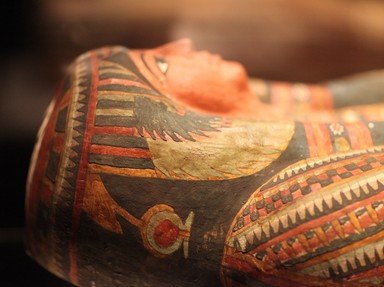Quiz Answer Key and Fun Facts
1. Once upon a time ... there was Upper Egypt (the southern part) and Lower Egypt (the northern part). Then came along a Pharaoh who united the two kingdoms. As there is quite a controversy about the name of this Pharaoh (Menes or Narmer, who perhaps are the same person), I'll ask you something all Egyptologists agree upon. What was the name of this dynasty?
2. The Third Dynasty starts in 2686 BC with a Pharaoh known to us under several names. What was *NOT* one of his names?
3. The Fourth Dynasty is known for the Great Pyramids. Khufu, Khafra and Menkaure built pyramids still visible near Giza. According to Vassil Dobrev, who ordered the Great Sphinx in this region?
4. One of the longest reigning Pharaohs was member of the Sixth Dynasty. He became Pharaoh at six years old, and remained on the throne for at least 62 years - some even mention a rule of 94 years. Who was this long-ruling king?
5. We move on to the Twelfth Dynasty, founded by Seheptibre Amenamhat I. His successor chose the name Kheperkare Senusret I, but we may know him better by his hellenized name. What was the hellenized name of Kheperkare Senusret I ?
6. The Seventeenth Dynasty ended with Kamose (reigned 1554 BC -1549 BC), and the Eighteenth Dynasty started with Kamose's brother (or half-brother, for the identity of Kamose's father is not ascertained). Who was this successor to Pharaoh Kamose?
7. Which Pharaoh defeated the Sea People in 1178 BC?
8. Some Egyptian dynasties consisted entirely of foreigners.
9. The founder of the Twenty-Sixth dynasty, Pharaoh Necho I, was killed on the battlefield when the Kushites invaded Egypt. Where was the Kushite kingdom situated?
10. After the Thirty-First Dynasty, two more dynasties emerged : the Argead Dynasty and the Ptolemaic Dynasty. Ptolemy I founded this last dynasty, but who was his wife?
Source: Author
JanIQ
This quiz was reviewed by FunTrivia editor
bloomsby before going online.
Any errors found in FunTrivia content are routinely corrected through our feedback system.
